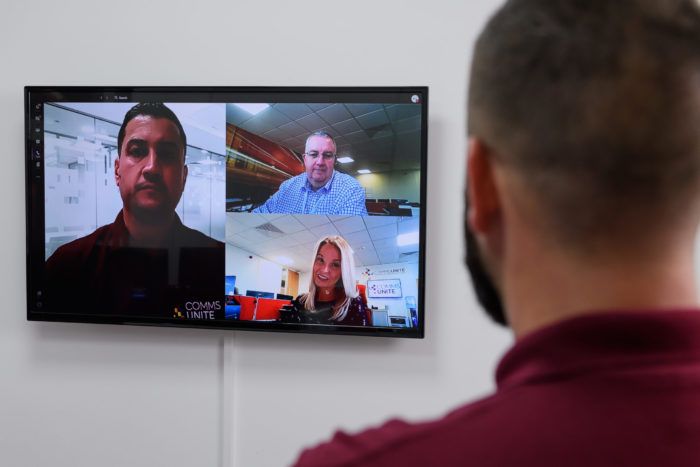
Can Macs Get Malware and Viruses?
With cyberattacks becoming an increasingly sophisticated and ever-present threat, business leaders are right to think very seriously about how they can protect their data. But do you need to worry about your Macs?
The accepted wisdom has always been that Mac users don’t need antivirus software. As Macs only account for around 10% of the market, cybercriminals have been slow to target them. However, the truth is that Macs can indeed get viruses and malware, so you must be aware of the risks.
Busting the myths about Macs and malware
Some people mistakenly believe that Apple products are immune to viruses and malware, but sadly that’s not the case. All Macs, from Mac Minis to MacBooks and iMacs, can be infected by viruses and malware, and be hacked by cybercriminals. Traditionally, Macs have been less vulnerable than Windows computers, but that’s simply a numbers game.
With Windows machines accounting for the bulk of the market, the rewards for successfully infiltrating Windows computers are far greater than for Macs. However, with more businesses now switching to Macs, cybercriminals are increasingly targeting them, with attacks on Macs rising by over 400% from 2018 to 2019. This is resulting in everything from computer slowdowns and unwanted pop-ups to sensitive data being held to ransom.
Apple Mac’s built-in antivirus measures
Apple does include some antivirus software within its Mac operating system that can help to fend off many cybersecurity threats and provide some peace of mind.
The Mac’s built-in antivirus software includes XD (execute disable), ASLR (address space layout randomisation) and SIP (system integrity protection) to protect your critical system files and prevent malware from doing harm. Other tools such as XProtect, Gatekeeper and the Malware Removal Tool also provide important protection and make it almost impossible for Mac users to download harmful files.
However, that does not make Macs immune from Malware as hackers are constantly updating their attacks to try to get around this protection. The advice from Apple is clear – avoid any third-party apps (those not found in the Mac App Store) if you want to stay virus-free.
Read more about the in-built security on Apple Macs.

What does it look like when your Mac has a virus?
The telltale signs that your Mac has a virus are never pretty. If you notice any of the following in your Mac, there’s a good chance it has a virus.
What types of malware can infect a Mac?
The answer to “can Macs get malware?”, and “can Macs get viruses?” is a resounding yes. But what’s the difference between viruses and malware?
Very simply, malware is a catch-all term for any type of malicious software that can affect your computer, regardless of how it works or where it came from. A virus is a specific type of malware that inserts its code into other programs to self-replicate, just like how biological viruses replicate in cells.
So, what different types of Malware can affect your Mac?
- Cryptomining
This malware uses your Mac’s computing power to mine Bitcoin and other cryptocurrencies on the attacker’s behalf.
- Ransomware
One of the most malicious types of malware, Ransomware invades your computer and demands payment in exchange for the decryption or release of your sensitive data.
- Scamware
Scamware pretends to be a legitimate program, such as antivirus software, to steal money from you or trick you into downloading a more harmful program.
- Trojans
Like scamware, trojans pretend to be useful programs, such as fake MacDefender, MacSecurity or MacProtector software, but their primary goal is to give hackers access to your computer.
- Spyware
This is a program that hackers use to infiltrate your computer, spy on your online activity and steal the monitored data.
- Rootkits
Although not commonly used on Macs, rootkits can give hackers access to and control over your device.
- Adware
As if there aren’t enough annoying pop-ups out there already, adware causes random advertisements with possible spyware features to track you and slow down your Mac’s performance.
How do viruses get onto your Mac?
Macs are not immune to viruses and in fact, 674,000 malicious programs were developed in 2020 to target Apple computers alone. There are a few different ways that viruses can get onto your Mac:
- Phishing emails
These are fraudulent emails that arrive in your inbox and ask you to click a link or an attachment that triggers the installation of malware. These emails can purportedly be from banks, companies you already deal with and even friends and family members, but they are all malicious and fake.
- Fake apps and updates
The most common way Mac users are targeted is by notifications that try to lure you into downloading a fake app or software update. Installing it could open the door to endless ads, spyware, or any number of other online threats.
- Infected USB/Thunderbolt
Apple Macs offer Thunderbolt connectivity but there are vulnerabilities that can give hackers access to all of your computer’s data, even if it’s locked or password protected.
How to protect a Mac from malware and viruses.
So, how do you keep your Mac safe out there in the cyber Wild West? Apple takes care of the technical protection with its in-built antivirus measures but there are also a few common sense steps that you can take.
- Learn how to spot fraudulent emails – there are always telltale signs they aren’t from a trusted sender
- Don’t download unfamiliar software and always stick to the official Mac App Store
- Always treat pop-ups and unfamiliar antivirus ads with suspicion
- Be careful when plugging in USB sticks or cables and make sure you always know where they’ve come from
- Do not connect to public or untrusted Wi-Fi networks, or use a virtual private network (VPN) if you do
- Make sure you regularly update your backups
- Always update your Mac’s OS so it contains the latest security measures
- Keep a close eye on your Mac and don’t let anyone you don’t know use it
Keeping your Macs and your business safe
Are Macs the computer of choice in your office? Want to get a cybersecurity expert to check your IT infrastructure and make sure you have every precaution covered? Then give us a call on 01473 599020 or email hello@comms-unite.co.uk to discuss your options.



